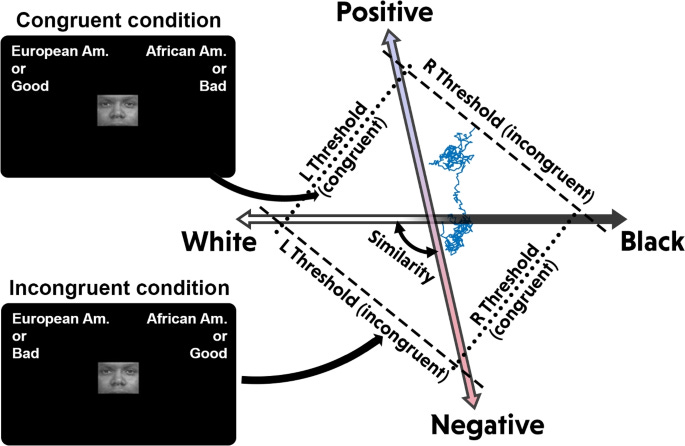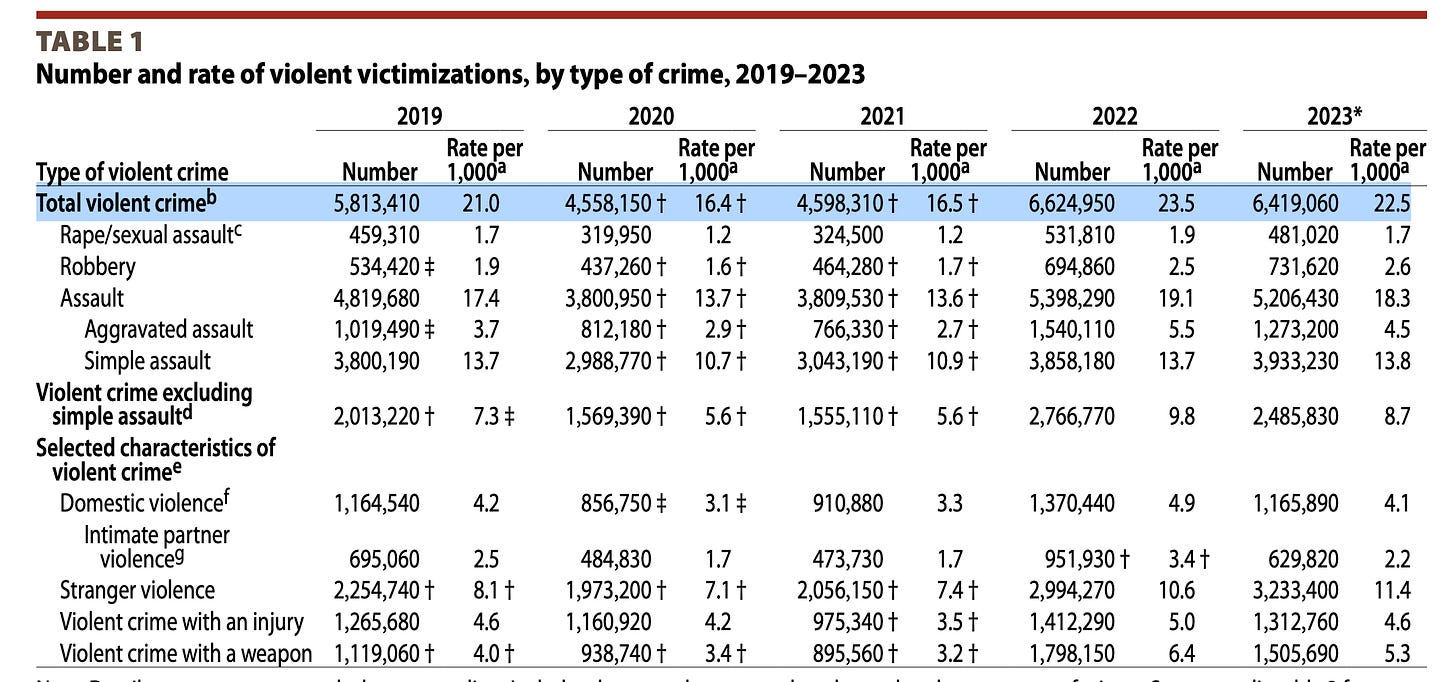RePath Round Up--You Implicitly Biased, Bro?
Plus crime is down, crime is up, and the cocaine pizza caper of Düsseldorf
Click to check your bias: “All Rise” (an advocacy group focused on treatment courts) recently recommended to its thousands of members a “Justice System Bias Indicator Tool” for treatment court judges, attorneys, probation officers and case managers. This tool comes from the Center for Justice Innovation and is another branch of implicit bias tools from the Implicit Association Test (IAT), Harvard edition. The idea is to have all of the individuals surrounding treatment courts take a click, click, click test to inform them (or their co-workers and bosses) whether or not they harbor implicit bias.
The IAT has been around for more than two decades. While its proponents continue to add variations of the tests for different applications, there is a growing body of evidence questioning the reliability and predictive validity of implicit bias tools. Basically, the test measures reaction times to images and makes conclusions based on how long it takes for a person to make an association to an attribute and a photograph. The test switches different attributes with different subjects (the object of potential bias) and then determines whether the reaction time means the test subject has an implicit bias.
But does it work? In short, probably not and certainly not for an individual assessment of implicit bias that has any meaning in the real world. The IAT in general has limited validity on an individual basis (which is the purpose proposed by “All Rise”), has low test-retest reliability (with correlation coefficients ranging from 0.56 to as low as 0.27 over short intervals), little evidence for prediction of real-world discriminatory behavior (explaining only 2-6% of variance in explicit measures), arbitrary scoring for bias levels, inability to distinguish between personal attitudes and cultural associations, lacks contextual information relevant to real-life behavior, and fails to account for intersectional variables.
Whatever value the testing may have, many scientists caution against its use to make inferences about individuals or in making policy decisions. If the testing is recommended to treatment court personnel for any purpose, those individuals should be informed of the limitations and valid critiques of the method, be given the option to opt out of the testing, and be explicitly informed how the test data will be analyzed and shared.
What are the crime numbers????—the four stages of confusion:
Listen people, crime is down—The FBI didn’t release its 2022 crime numbers until September of 2023. But when it finally reported the numbers, they showed that the nation’s violent crime rate had fallen 2.1% over that year. Awesome!
Whoops. crime is up—A year later, in September of 2024, the FBI quietly amended these figures with an alarming revision. Violent crime was actually up 4.5% and the numbers used by policy makers and law enforcement for a year missed thousands of murders, rapes, robberies and aggravated assaults. The FBI made no mention of the revisions and it took weeks for anyone to even notice the change. As College of William and Mary crime studies professor Carl Moody puts it:
“I have checked the data on total violent crime from 2004 to 2022, There were no revisions from 2004 to 2015, and from 2016 to 2020, there were small changes of less than one percentage point. The huge changes in 2021 and 2022 [6.6%], especially without an explanation, make it difficult to trust the FBI data.
O.K., Crime is unknown—While the FBI takes years to publish and revise its crime stats, there is another secret to this process that few understand. The FBI’s numbers are actually a mix of reported crimes and “estimates.” The FBI estimates crime data from partial year data from police departments and makes generalized estimates from departments that provide no data. Apparently, the FBI’s method of generating these estimates changes over time which also changes the numbers reported. Of course, no one seems to understand the method used by the FBI for estimation and even crime statistics experts consider it a “black box.”
Uh oh, actual violent crime may be up 40%—Even if the FBI provided timely crime statistics without revision based on actual numbers rather than estimates, there is still a significant problem. The FBI is attempting to count the crimes that are reported, which is not the same thing as crimes that actually occur. It is estimated that only about 45% of violent crimes are reported to police. To consider this distinction, the Bureau of Justice Statistics conducts an annual survey of criminal victimization that attempts to include reported and unreported crime. And the numbers are not good. Where the FBI reported a reduction of violent crime in 2022 from the previous year and only recently revised those number to show a 4.5% increase, the BJS victimization survey showed an increase in violent crime across the US in excess of 40%.
FTX Fallout: Crypto-fraudster Sam Bankman Fried continues to serve his 25 year sentence for fraud and conspiracy for his part in stealing billions in assets as part of the crypto exchange FTX. His one-time girlfriend, executive at FTX, and polycule theorist co-conspirator Caroline Ellison is serving a two-year stretch for fraud. For his part, Ryan Salame, former co-CEO at FTX, has been sentenced to 90 months for his role in the fraud. Salame announced his recent life-change the way every executive should—on LinkedIn.
Speech for me, not for thee (if you are suing me): A Nashville attorney has sued a private prison company multiple times for civil rights abuses. Now four federal judges have placed gag orders forbidding him from publicly discussing the facts surrounding the cases. He’s now suing the federal courts for violating his first amendment rights. As his lawyer puts it:
Speech critical of the government and the contractors that carry out government work is fundamental to the First Amendment and can help shed light on unlawful or unjust actions taken by the government. The court cannot silence [attorney] simply because he's criticizing a government contractor. Public interest litigation requires public discussion."
Like CBD ain’t necessarily the good stuff: The Supreme Court heard arguments earlier this month in a case where a truck driver was fired from his job after a random drug test came back positive for marijuana. The trucker had taken a wellness product that contained CBD, but was supposed to be completely free from THC. However, a blood test required for his job (actually mandated by the federal government) showed some presence of THC and he lost his job, his pension, and his health insurance. This happened to him even though there is no evidence he was ever impaired or had intentionally taken any banned substance. He has sued the wellness company for leaving traces of THC in the product and the Supreme Court will decide if his case can continue.
Stranger Stuff:
The IRS is making friends: Everyone’s favorite government agency is now fining citizens held hostage overseas if they fail to make their quarterly payments which they have a hard time doing because they are being held hostage overseas.
Best selling pizza: The “Number 40” quickly became the best selling pizza on the menu, which may be related to the fact that it came with a side order of cocaine.
Should’ve hid it in the pizza: Three corrections officers in Georgia were convicted of helping inmates smuggle drugs and cell phones by leaving the contraband in the officer’s bathroom which was later cleaned by enterprising inmates.
Central Florida: A kangaroo was on the loose in Volusia County after narrowly escaping an encounter with a bear.
He did the meme: A rogue Vegas cop found out that a 911 call came in to complain about his wrongful detention of two men. He then proceeded to change his clothes and respond to the call as if he wasn’t the perp.







